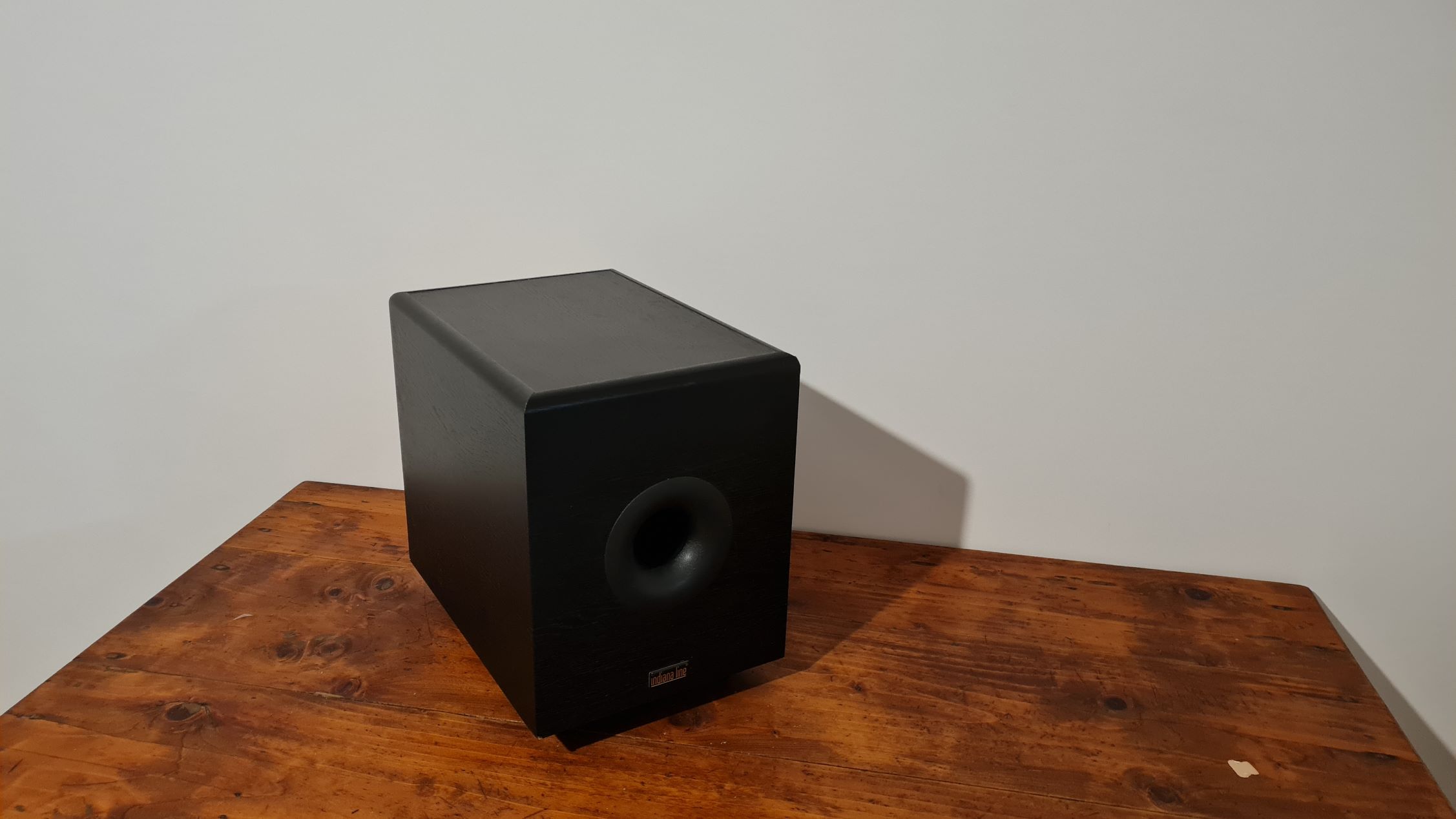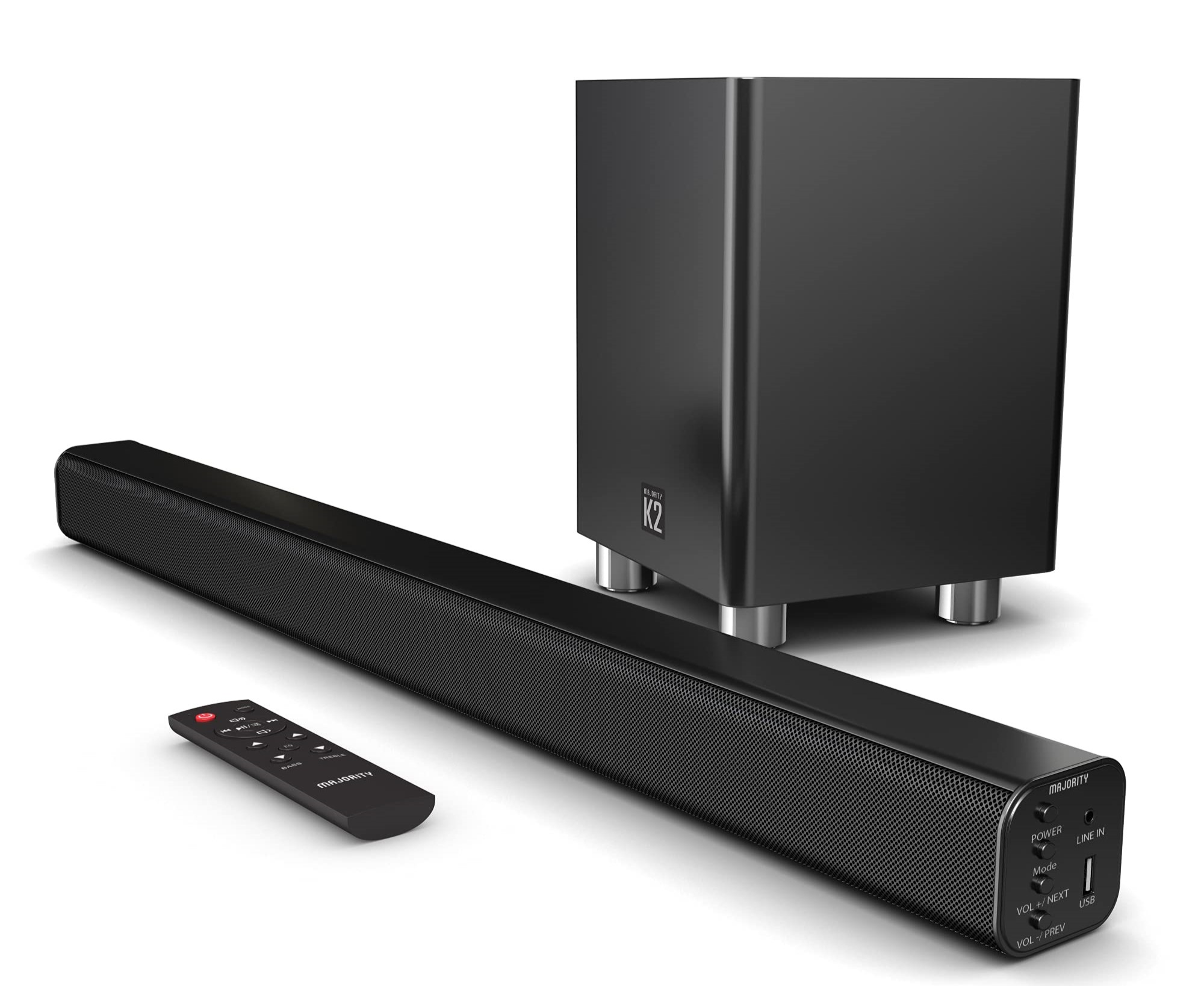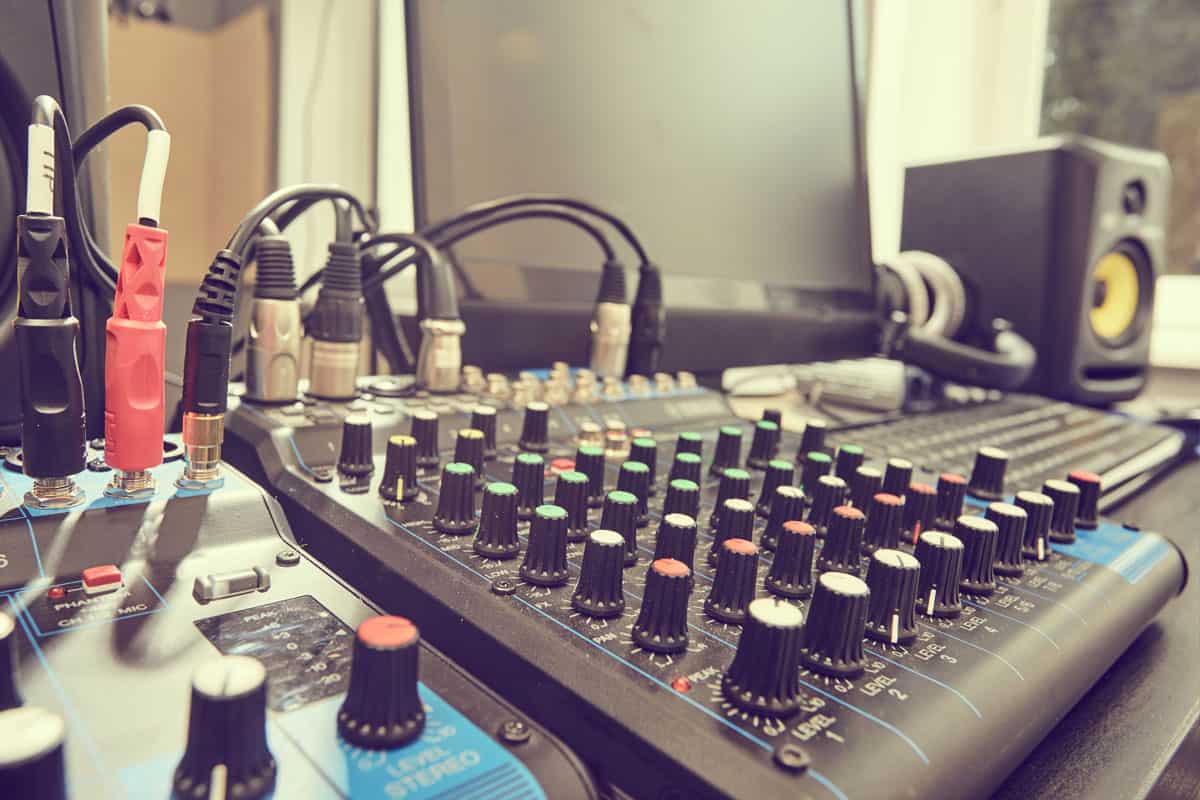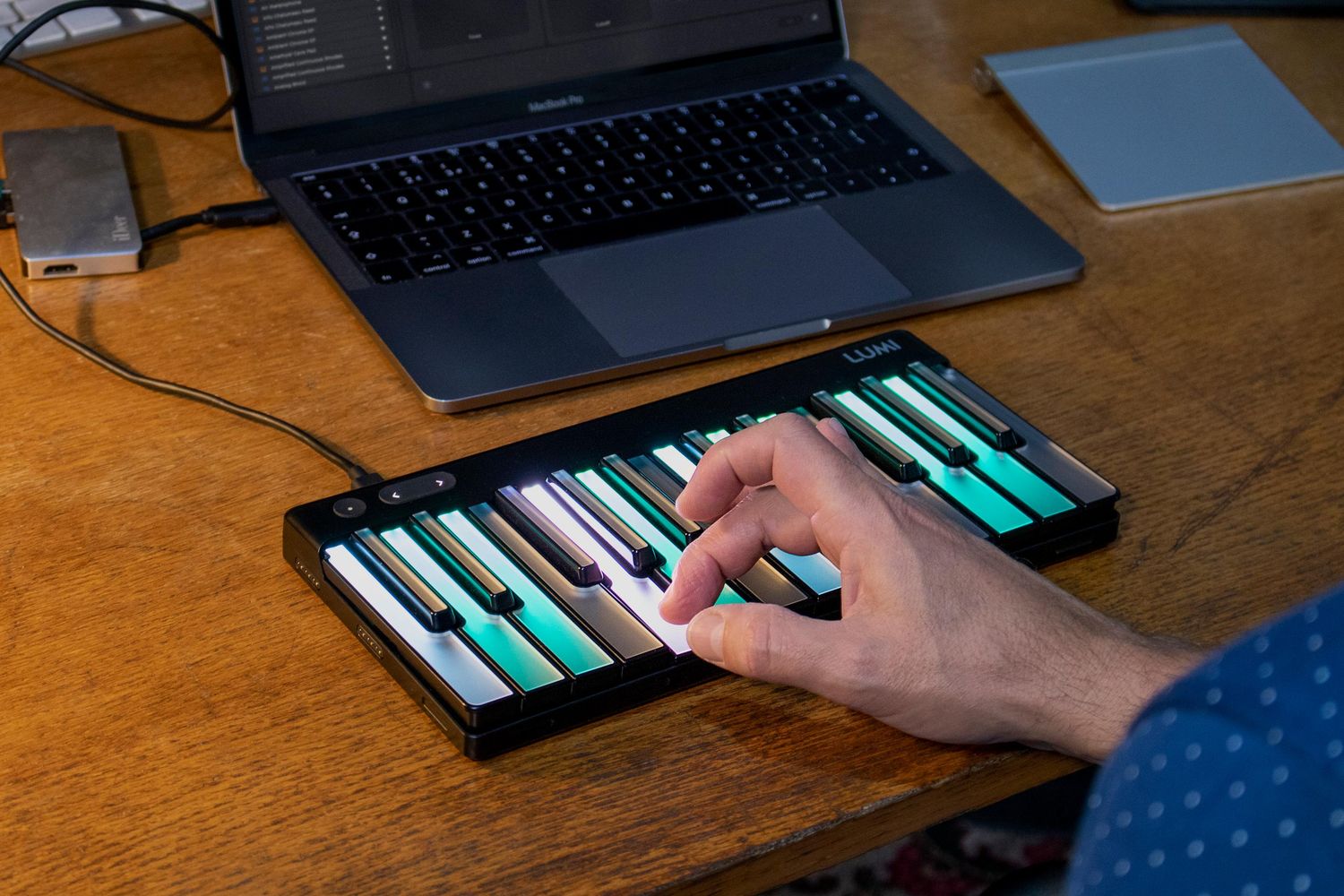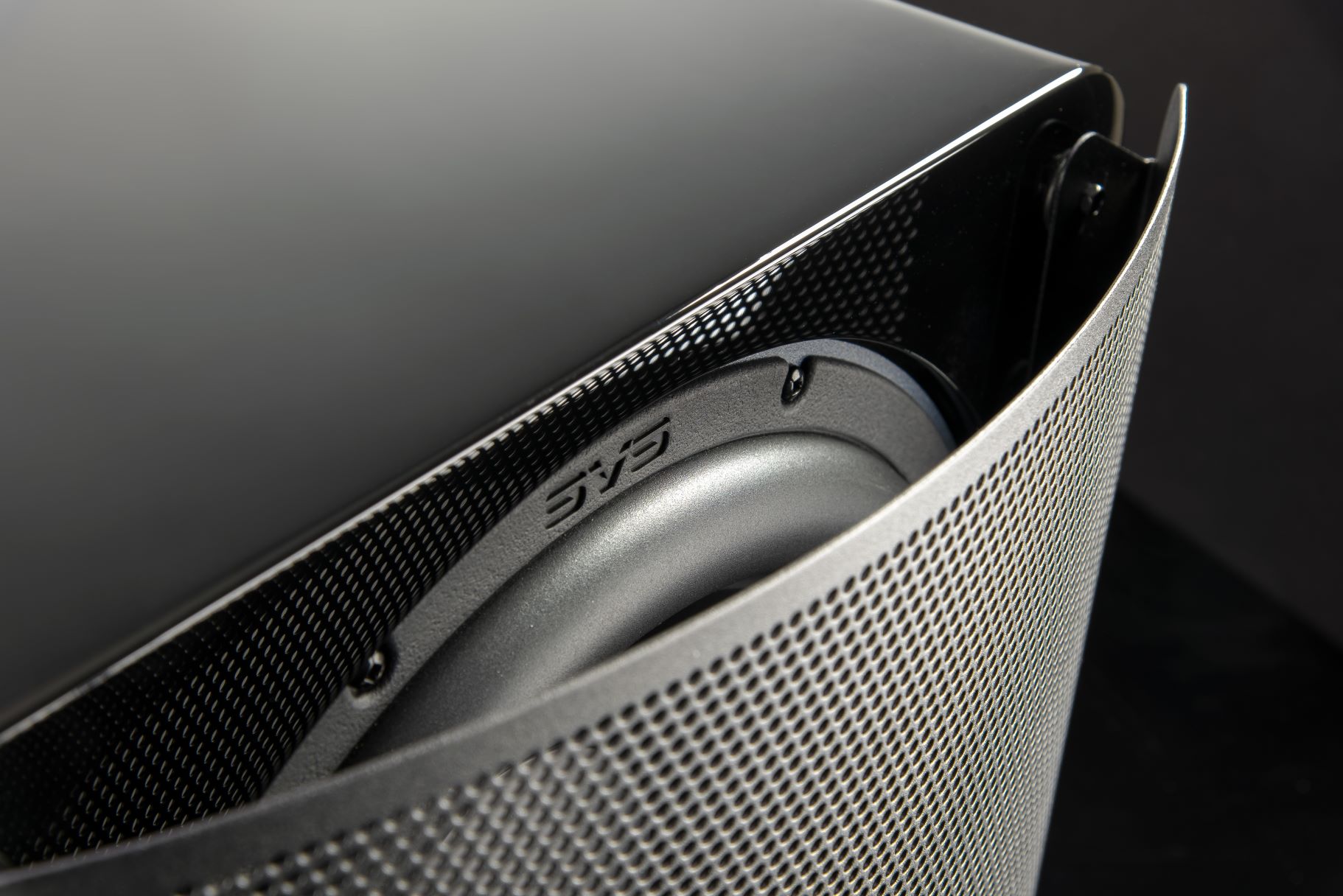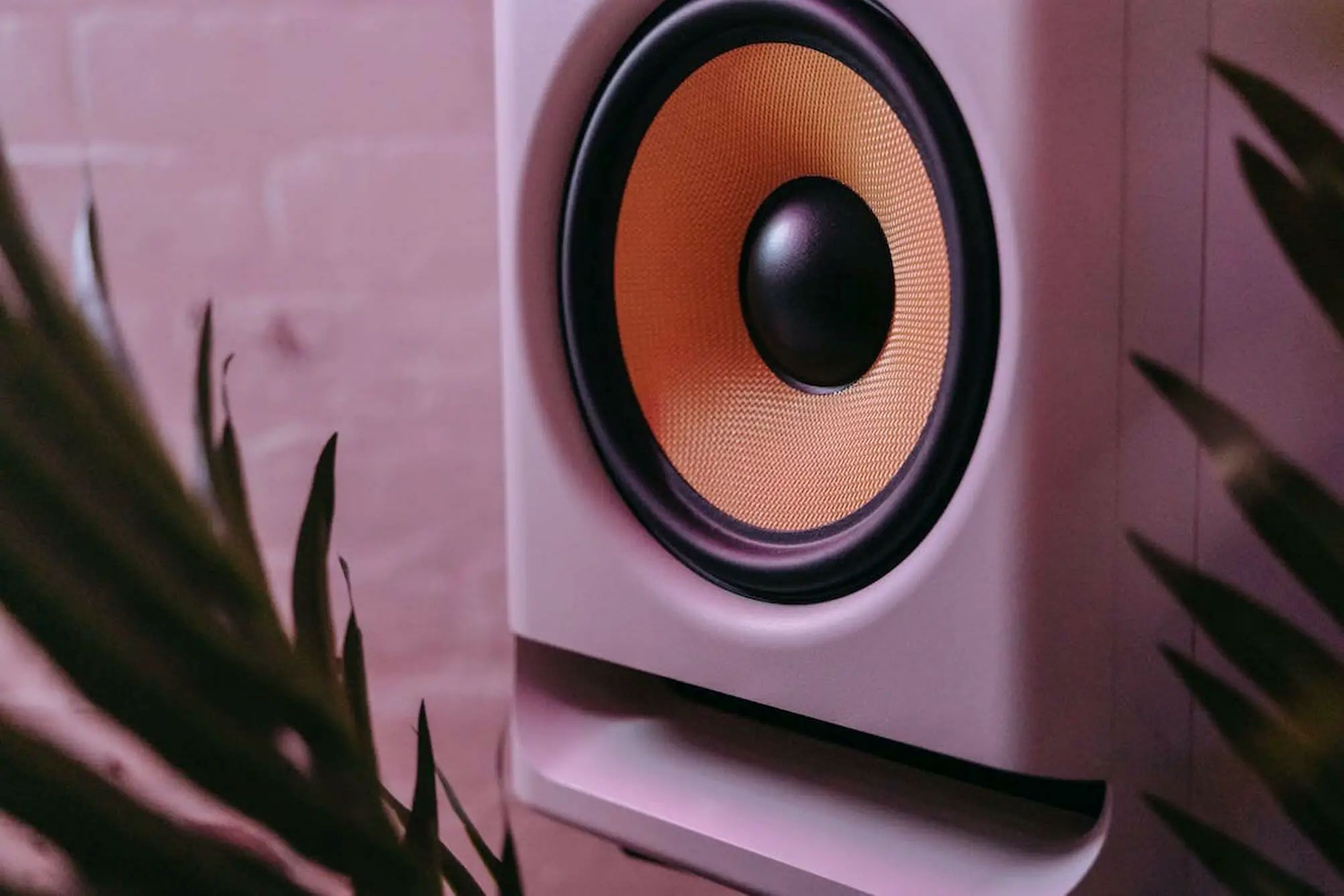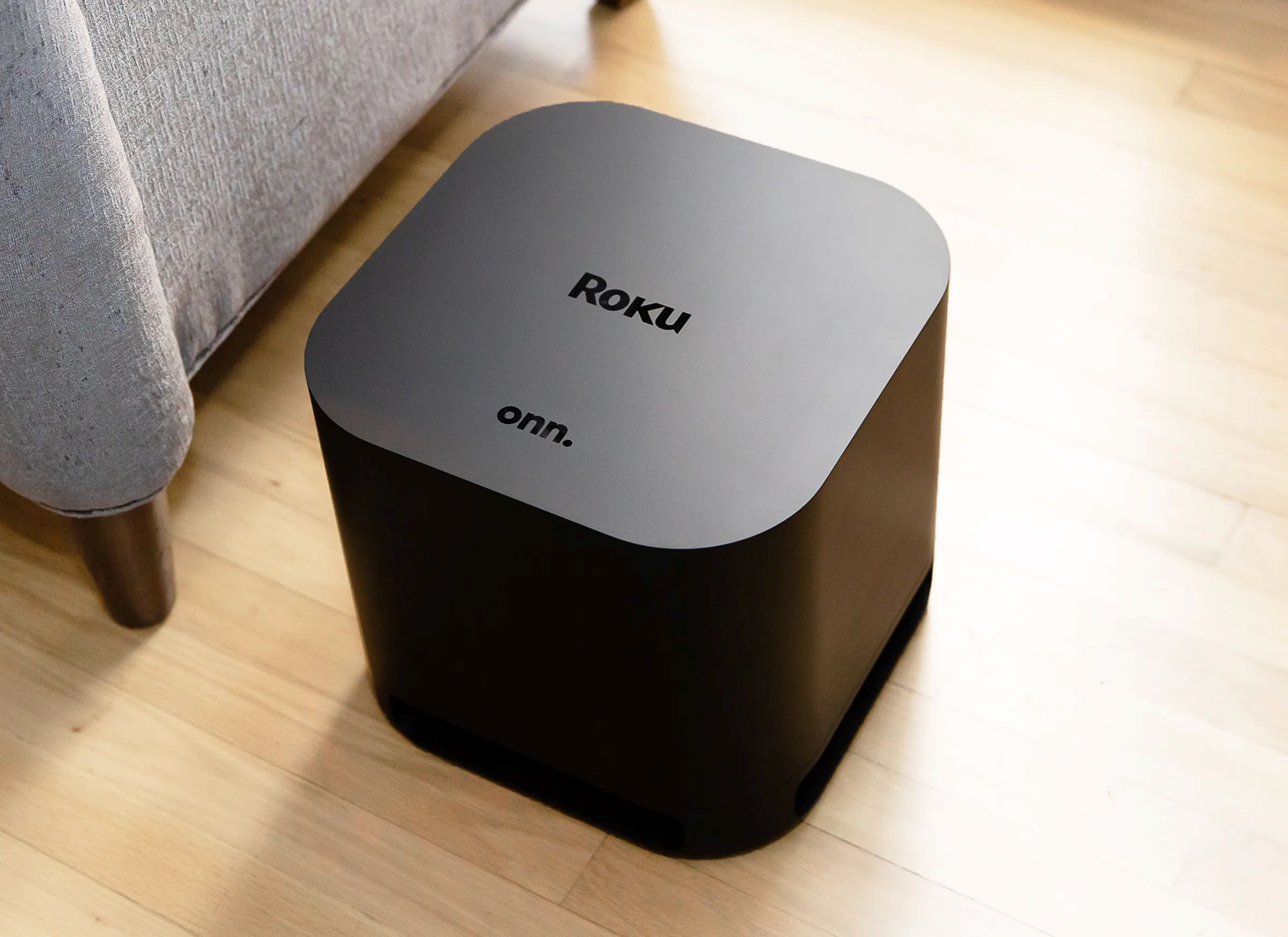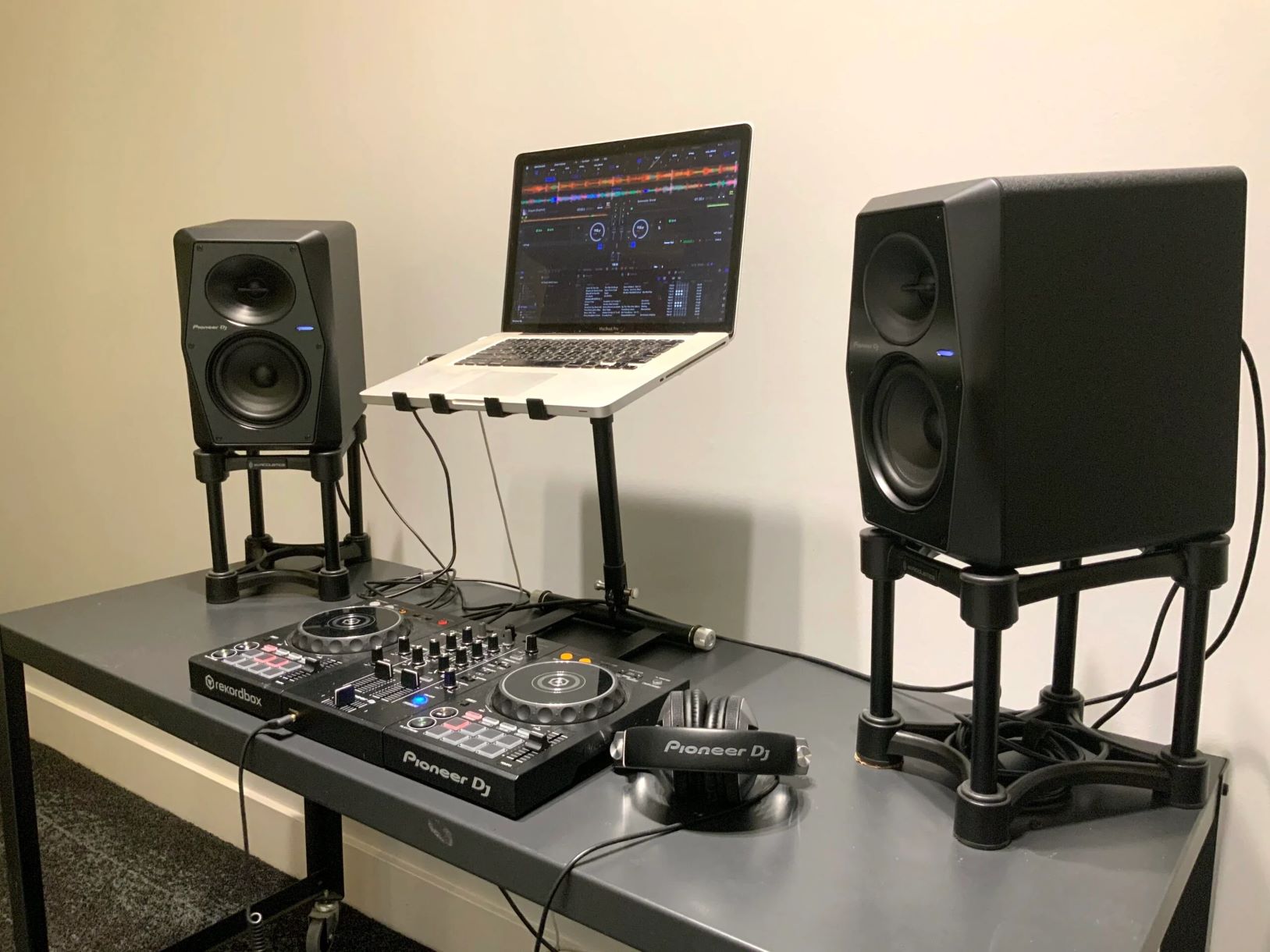Home>Devices & Equipment>Subwoofer>How To Connect Subwoofer To Computer
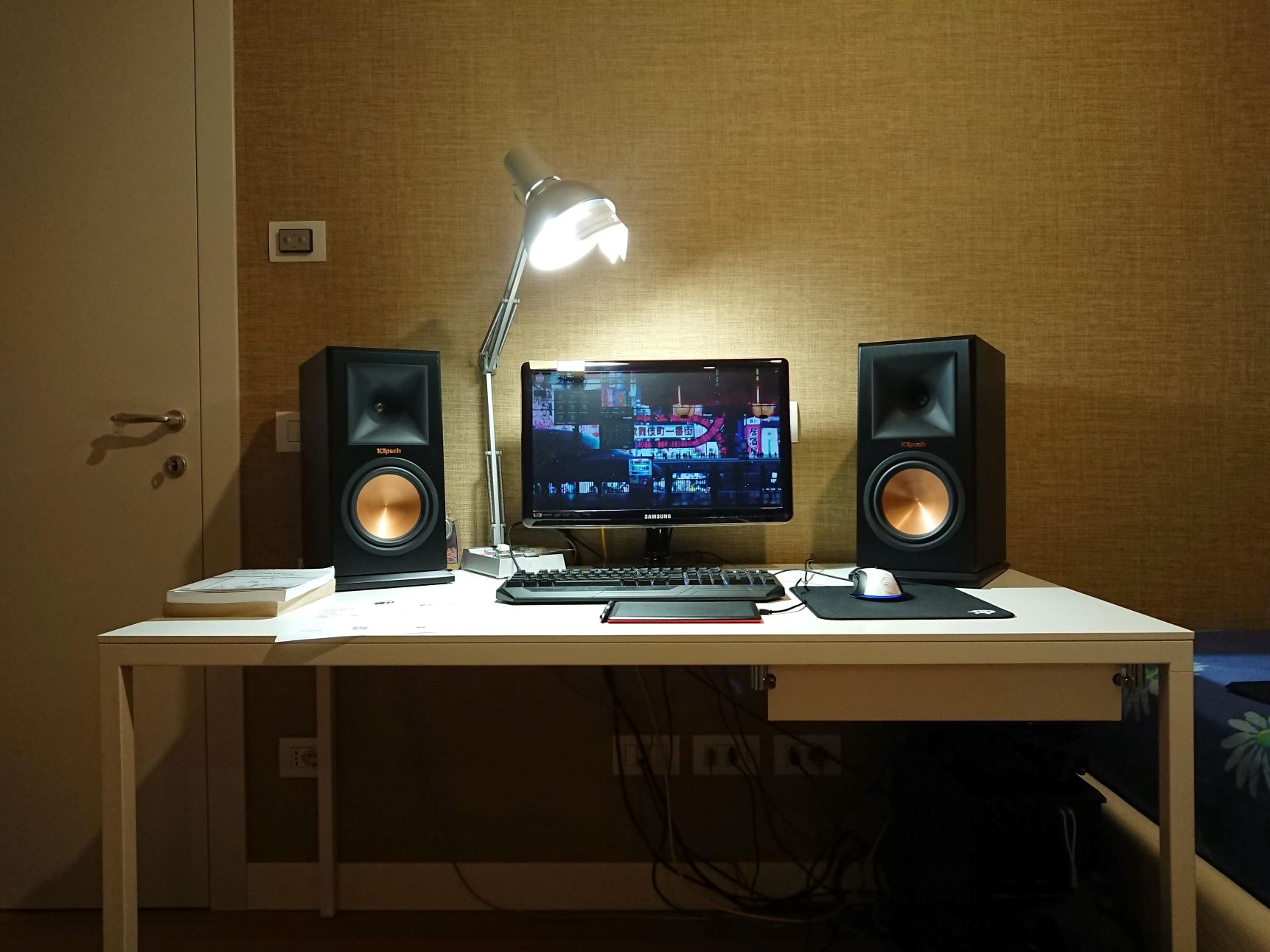

Subwoofer
How To Connect Subwoofer To Computer
Modified: January 22, 2024
Learn how to easily connect a subwoofer to your computer and enhance your audio experience. Step-by-step guide for connecting your subwoofer to your PC.
(Many of the links in this article redirect to a specific reviewed product. Your purchase of these products through affiliate links helps to generate commission for AudioLover.com, at no extra cost. Learn more)
Table of Contents
Introduction
Welcome to the world of immersive and powerful sound with subwoofers! Whether you’re a music lover, a movie enthusiast, or a gaming aficionado, a subwoofer can take your audio experience to the next level.
A subwoofer is a specialized speaker designed to reproduce low-frequency sounds, commonly referred to as bass. It adds depth, richness, and impact to your audio, allowing you to feel the rumble of explosions in movies or the thump of basslines in your favorite songs.
Connecting a subwoofer to your computer can dramatically enhance your multimedia experience. You’ll be able to enjoy a more immersive soundstage, with the low-frequency effects reverberating through your room. Whether you’re watching movies, listening to music, or playing games, the added punch from the subwoofer will create a more realistic and engaging audio experience.
In this article, we will guide you through the process of connecting a subwoofer to your computer. We will provide step-by-step instructions to ensure you can enjoy the deep, powerful bass and crystal-clear sound that a subwoofer brings to your audio setup.
Before we dive into the details, let’s first take a moment to gather the necessary equipment. Having everything you need on hand will make the connection process smooth and hassle-free.
Step 1: Gather the Necessary Equipment
Before you can connect your subwoofer to your computer, there are a few essential items you’ll need. Make sure to gather the following equipment:
- A subwoofer: Choose a subwoofer that fits your audio setup and personal preferences. Consider factors such as power output, size, and connectivity options.
- Audio cables: Depending on the available ports on your subwoofer and computer, you may need different types of audio cables. The most common options are RCA, 3.5mm, or digital coaxial cables.
- Power cable: Ensure you have the appropriate power cable for your subwoofer.
- User manual: Keep the user manual for your subwoofer handy. It will provide specific instructions for connecting and configuring your particular model.
Once you have gathered all the necessary equipment, you’re ready to move on to the next step: locating the appropriate ports on your computer.
Step 2: Locate the Appropriate Ports on Your Computer
Now that you have all the required equipment, it’s time to locate the appropriate ports on your computer. The type of ports you’ll need to connect your subwoofer may vary depending on your computer’s audio setup.
Here are the most common types of ports you may encounter:
- 3.5mm audio jack: This is a standard audio port found on most computers. It’s typically colored green and labeled with a headphone icon. This port is used for connecting headphones or speakers.
- RCA ports: These are color-coded red and white, or red and black, ports found on some computers or audio interfaces. They are commonly used for connecting audio devices such as speakers, amplifiers, and subwoofers.
- HDMI port: If you have a high-definition multimedia interface (HDMI) port on your computer, you can use it to connect your subwoofer if it has an HDMI input. This can provide higher quality audio and video transmission.
- Digital audio ports: Some computers may have digital audio ports, such as optical or coaxial. These are typically used for connecting audio devices that support digital audio signals.
Take a moment to inspect your computer and identify the available audio ports. Note down the types of ports you have, as you’ll need this information for the next step.
Once you have located the appropriate ports, it’s time to move on to the next step: connecting the subwoofer to your computer.
Step 3: Connect the Subwoofer to the Computer
Now that you have identified the available ports on your computer, it’s time to connect the subwoofer. The method of connection will depend on the ports available on both your subwoofer and computer.
Follow these general steps to connect your subwoofer to your computer:
- First, ensure that both your subwoofer and computer are turned off.
- Locate the audio output port on your computer. This could be a 3.5mm audio jack, RCA ports, HDMI port, or digital audio ports.
- If your computer has a 3.5mm audio jack, plug one end of the audio cable into the subwoofer’s input port. Then, plug the other end into the 3.5mm audio jack on your computer.
- If your computer has RCA ports, use an appropriate RCA cable. Connect the red (right channel) or white (left channel) end of the cable to the corresponding subwoofer input. Connect the other end of the cable to the RCA audio output ports on your computer.
- If you are using an HDMI connection, connect one end of the HDMI cable to the HDMI output port on your computer, and the other end to the HDMI input port on the subwoofer.
- If you are using digital audio ports, use a digital coaxial or optical cable to connect the appropriate ports on both the subwoofer and computer.
- Ensure that all connections are secure and properly inserted into their respective ports.
Once all the connections are made, you can proceed to the next step: adjusting the subwoofer settings to optimize the sound.
Step 4: Adjust the Subwoofer Settings
After connecting the subwoofer to your computer, it’s important to adjust the settings to ensure optimal sound quality. The exact steps for adjusting the subwoofer settings may vary based on the model and brand of your subwoofer, but here are some general guidelines:
- Refer to the user manual: Consult the user manual that came with your subwoofer for specific instructions on adjusting the settings. The manual will provide detailed information on how to access the subwoofer’s control panel or settings menu.
- Access the subwoofer’s settings: Locate the control panel or settings menu on your subwoofer. This may involve pressing specific buttons, using a remote control, or using a smartphone app if your subwoofer is equipped with wireless capabilities.
- Adjust the crossover frequency: The crossover frequency determines the point at which low-frequency sounds are redirected from the main speakers to the subwoofer. Set the crossover frequency to blend seamlessly with your main speakers, ensuring a smooth transition between the audio sources.
- Control the volume: Adjust the volume level of your subwoofer to achieve the desired balance between the main speakers and the subwoofer. Too high of a volume can overpower the other audio components, while too low of a volume will result in a lack of bass impact.
- Experiment with other settings: Depending on your subwoofer, there may be additional settings to fine-tune the sound, such as phase control, equalizer adjustments, or room correction features. Explore these settings to tailor the sound to your preferences and room acoustics.
Remember to make incremental adjustments and test the sound after each change to find the optimal settings for your audio setup. It may require some trial and error to achieve the perfect balance and sound quality.
Once you have adjusted the subwoofer settings, it’s time to move on to the final step: testing the connection to ensure everything is working correctly.
Step 5: Test the Subwoofer’s Connection
With the subwoofer connected and the settings adjusted, it’s time to test the connection to ensure everything is working correctly. Testing the subwoofer’s connection will help you verify that the bass is being reproduced accurately and that it blends well with the rest of the audio.
Follow these steps to test the subwoofer’s connection:
- Turn on your computer and the subwoofer.
- Play some audio that has a prominent bass component, such as a movie scene with explosions or a bass-heavy song. You can also use specific audio test tracks designed to evaluate subwoofer performance.
- Listen for the presence of deep, low-frequency sounds coming from the subwoofer. You should feel the impact of the bass and notice a significant improvement in the overall audio experience.
- Adjust the volume balance between the subwoofer and the main speakers to achieve a harmonious sound. The bass should not overpower the other audio elements, but rather complement them.
- Listen for any distortion or rattling sounds coming from the subwoofer. If you notice any issues, double-check the connections and settings to ensure everything is properly configured.
During the testing phase, take some time to fine-tune the subwoofer’s settings further if necessary. Experiment with different audio sources and genres to experience the full range of bass capabilities offered by your subwoofer.
Congratulations! You have successfully connected and tested your subwoofer to your computer. Now you can sit back, relax, and enjoy the immersive audio experience that the subwoofer adds to your multimedia activities.
Before we wrap up, let’s summarize the key steps involved in connecting a subwoofer to your computer.
Conclusion
Connecting a subwoofer to your computer can greatly enhance your audio experience, immersing you in deep, impactful bass that adds depth and richness to your favorite movies, music, and games. By following the steps outlined in this guide, you can easily connect your subwoofer to your computer and optimize its settings for optimal sound quality.
Remember to gather all the necessary equipment, locate the appropriate ports on your computer, and make the proper connections. Adjusting the subwoofer settings, including the crossover frequency and volume, will help you achieve the ideal balance between the subwoofer and the main speakers.
Testing the subwoofer’s connection is crucial to ensure it is producing accurate bass and seamlessly blending with the rest of the audio. Fine-tune the settings if necessary and listen for any distortion or rattling sounds that may indicate a problem with the connections or configurations.
Once everything is set up and tested, you’re ready to enjoy the enhanced audio experience that your subwoofer brings to your computer setup. Sit back, relax, and let the deep rumble of bass transport you into a world of immersive sound.
Now that you have the knowledge and steps needed to connect a subwoofer to your computer, go ahead and elevate your audio experience to new heights!

